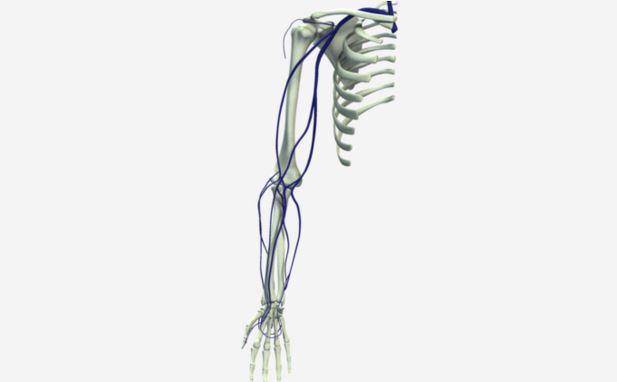

Library > Radiography > Radiography Procedures > Pharmacology and Drug Administration
Try Simtics for free
Start my free trialPharmacology and Drug Administration

Materials Included:
-

-

-

-

-

Check our pricing plans here
Unlimited streaming.
Some radiographic examinations involve the administration of intravenous (IV) contrast media, and it is becoming more common for radiologic technologists to administer the pharmocological agent, rather than the physician or radiologist. Therefore it is important for the technologist to have a basic understanding of pharmacology principles and how to perform IV cannulation. This module teaches you about pharmacology and the role of the radiologic technologist in administering drugs for radiologic procedures. Read about the procedures, watch the video demonstration, and explore the relevant anatomy. The online simulator, available in test and practice mode, provides a safe environment to learn and practice the steps for venous cannulation. This module is an ideal resource if you are studying for the American Registry of Radiologic Technologists® (ARRT) registry exams.
You’ll learn
- to describe basic pharmacological principles such as naming, classification, dosing and charting practices
- to identify the different routes of drug administration
- to explain the concepts of pharmacokinetics and pharmacodynamics
- the role of a radiologic technologist in administering pharmacological agents to patients
- to practice, perfect and test your skills in performing venous cannulation for administering contrast media
- about the different options for patients with procedural anxiety
- how to identify adverse reactions and how to respond in a medical emergency
- much more (see “content details” for more specific information)
- Understand and describe the imaging professional's ethical and legal role in drug administration
- Explain the importance of obtaining a clinical history before administering any drug
- Understand and describe basic pharmacological principles including drug nomenclature, classification, dosing, and charting practices
- Understand and explain the concepts of pharmacodynamics and pharmacokinetics
- Explain various routes by which drugs may be administered, and the advantages and disadvantages of each route
- Discuss intravenous drug therapy and its complications
- Discuss specific drugs, drug categories, and methods of administering drugs used in medical imaging
- Explain the importance of patient preparation prior to a contrast study, and postprocedural considerations following a contrast study
- Describe the imaging technologist's role in venous cannulation
- Explain the importance of obtaining informed consent
- Define the categories of contrast agents and give examples from each category
- Understand the pharmacology of contrast agents
- Distinguish between mild and more severe drug reactions
- Discuss procedural anxiety and the types of medications used to treat it
- Understand and discuss the pharmacology of medications used in emergency situations
- List the contents of a crash cart
- Describe the role of the imaging technologist in a medical emergency
- Explain the HIPAA Privacy Rule, and Patient Safety Act (see reference)
The SIMTICS modules are all easy to use and web-based. This means they are available at any time as long as the learner has an internet connection. No special hardware or other equipment is required, other than a computer mouse for use in the simulations. Each of the SIMTICS modules covers one specific procedure or topic in detail. Each module contains:
- an online simulation (available in Learn and Test modes)
- descriptive text, which explains exactly how to perform that particular procedure including key terms and hyperlinks to references
- 2D images and a 3D model of applied anatomy for that particular topic
- a step by step video demonstration by an expert
- a quiz
- a personal logbook that keeps track of all the modules the learner has studied and how long
For more details on features and how your students can benefit from our unique system, click here.





